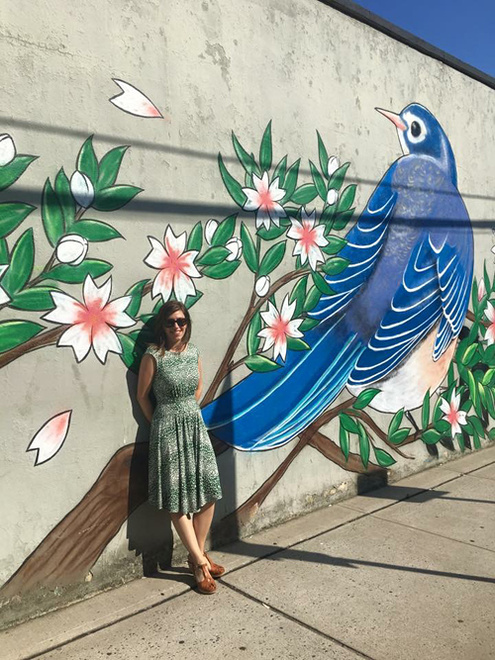
Alexandra Drakakis (MA, 2007) is associate curator at the National September 11 Memorial and Museum in New York City, where she has worked for nine years. A graduate of Rutgers University, she has also worked at Guernsey’s Auctioneers & Brokers and interned at the Metropolitan Museum of Art’s Antonio Ratti Textile Center. She has written “Michele Martocci’s Shoes: Escape from the Towers,” an article in The Stories They Tell: Artifacts from the National September 11 Memorial Museum (Skira Rizzoli, 2013) and the foreword to American Heart 9/11 Tenth Anniversary A Remembrance, photographs by Douglas Potoksky (American Heart Productions LLC, 2013).
What attracted you to Bard Graduate Center’s program?
I’ve always been fascinated by the cultural power of objects and their unique storytelling capacities. I first learned about the Bard Graduate Center’s program through my thesis advisor at Rutgers University, where I earned my BA in art history in 2004. She thought the program would offer me an opportunity to draw out the sociological and anthropological aspects of art history that I enjoyed and ultimately help deepen my relationship with the field of study. She couldn’t have been more correct. I was immediately drawn to the Center’s multidisciplinary approach to the study of the decorative arts, design, and culture. I was inspired by the way in which the school uses New York City’s constellation of cultural institutions as its playbook. Additionally, I loved the dynamic roster of talented, international professors that brought both academic theory and practical skills into their classrooms.What was your focus of study here, how did you find yourself involved with it?
When I matriculated in 2004, I didn’t have a clear area of focus. I’d long been interested in representations of women in art, however, and found an instant touchstone in “Ancient Greek and Roman Dress,” a course that was offered my first semester by visiting professor Dr. Jennifer Chi. Through Dr. Chi, students had access to the Shelby White and Leon Levy collection of antiquities at the Metropolitan Museum of Art. Working directly from some of the collection’s Attic vessels, I ended up writing my final paper on the representation of the hetairai, an ancient Greek class of highly-educated, independent courtesans.
Professor Catherine Whalen introduced me to the field of material culture studies in my second semester, which was a real game-changer for me. It was through studying about people and their relationships to things, and learning —for the very first time—about ethnographic approaches to research, that I first began to think about the material culture of 9/11. In the fall of 2005, when I took “Consumer Culture in the US” with Dr. Marilyn Cohen, everything just clicked. I started to go down to Ground Zero and observe people interact with vendors selling postcard booklets and other memorabilia on the street, back when the site was still just a hole. Soon thereafter, I couldn’t pass a souvenir shop in Times Square without thinking about the commercialization of 9/11 and what that meant—mugs invoking the World Trade Center, or for-sale memorabilia printed with the names of the deceased. And from there, my master’s thesis was born, with Dr. Cohen as my wonderful advisor.
